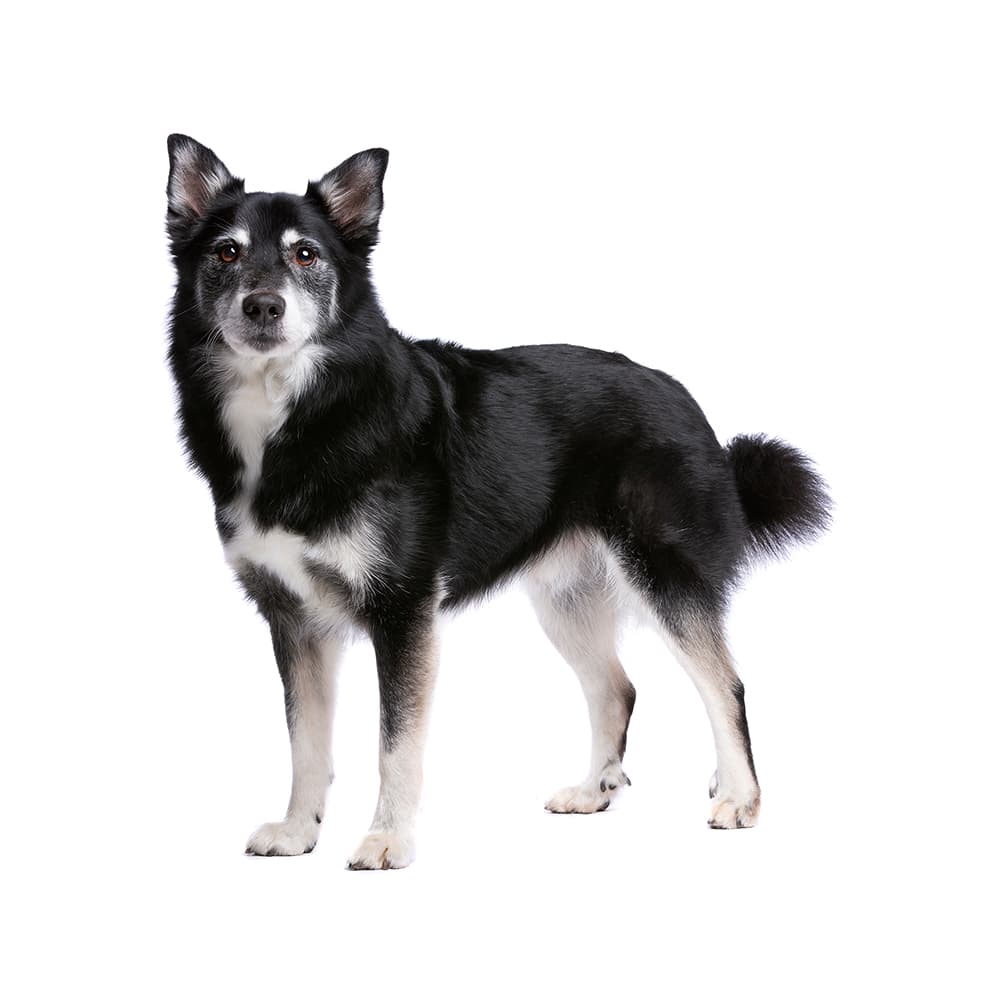Discover your dog's connection to this breed and 200+ others


Discover your dog's connection to this breed and 200+ others



The Icelandic Sheepdog is one of the oldest dog breeds, tracing its lineage back to the Vikings who brought them to Iceland around 874 AD. These dogs were used for herding and protecting livestock, particularly sheep, in the challenging Icelandic terrain. Over time, they adapted to the harsh conditions and became an integral part of Icelandic farming life. They are a vital part of Icelandic history and folklore, with numerous sagas, poems, and stories featuring these loyal and sturdy dogs. By the late 19th century, however, the breed was on the brink of extinction due to diseases brought in from foreign breeds. But thanks to dedicated breeders in the mid-20th century, the breed was saved, and today they are thriving in their native land and elsewhere in the world.
Icelandic Sheepdogs are generally healthy, though can suffer from hip and elbow dysplasia, patellar luxation, heart conditions, multidrug sensitivity, and autoimmune thyroiditis. They may be prone to certain eye conditions including distichiasis, a condition where an extra row of eyelashes can grow toward the cornea and cause irritation.
Icelandic Sheepdogs are known for their friendly and outgoing nature. They are intelligent, agile, and make excellent herding dogs due to their herding instincts. They are alert and good watchdogs, often barking to alert their owners of any potential danger. They are also social dogs that get along well with children and other pets when properly socialized. Their herding background makes them active and energetic, requiring regular exercise and mental stimulation.
They are highly adaptable and can live in a variety of environments, although they thrive best in cooler climates due to their thick and weatherproof double coat. They are known to be agile and athletic, often excelling in dog sports such as agility and obedience trials.
A canine genetic lineage is a group of individuals or entire breeds that descended from common ancestors predating modern breed formation. Often these lineages are associated with a ‘type’ of dog with a unique historical working role and associated behaviors (e.g., herding, scent hunting, etc.).
Spitz and Sled Dogs originate in the Arctic and subarctic regions which caused them the develop adaptations to cold climates. Some of these adaptations give rise to characteristics of the lineage, most notably a dense double coat that helps with insulation. The lineage of these dogs can be followed back to ancient breeds developed by Indigenous people. These ancient breeds were used as an aid for transportation, herding, guarding, and hunting. These jobs have created dogs that are independent, intelligent and have strong work ethics as well as a sturdy body that helps them to pull sleds or go on long journeys over rough terrain.
Example breeds with ancestry from this lineage include Akita, Chow Chow, and Siberian Husky.
They are the only native dog to Iceland.
One of the Icelandic Sheepdog's distinct features is the "barkur," a curled tail that rests on its back. This trait is commonly seen in the breed. Other spitz-like features of the breed include a foxy face, pointed ears, and their dense coat.
Despite its historical significance in Iceland, the Icelandic Sheepdog faced endangerment at one point. In the mid-20th century, its population dwindled, but efforts by dedicated breeders helped revive and preserve the breed.
https://www.petmd.com/dog/breeds/c_dg_icelandic_sheepdog
https://www.akc.org/dog-breeds/icelandic-sheepdog/ https://ofa.org/chic-programs/browse-by-breed/?breed=IS
https://www.fci.be/en/nomenclature/ICELANDIC-SHEEPDOG-289.html
https://www.ukcdogs.com/icelandic-sheepdog
Recommended by top vets with decades of experience
21 breeds
64 genetic health markers
50 genetic trait markers
